Creativity Is Intrinsic to Being Human
All children love to create.
Natural, joyful, original self expression is native to being alive, instinctive in us.
If you give a box of crayons and a piece of paper to a four year old they know exactly what to do. They do not need explanations or instructions. They immediately begin to scribble and draw with delight.
Not knowing how to draw has to be learned! Turn on the music and you’ll see that every toddler knows how to dance. You have to go to dance class to learn that only certain kinds of movements qualify as dance, certain ‘positions’ that have to be learned, repeated and perfected.
Children excel in creativity and imagination. There is hardly an art form that is not within their easy reach- drawing, painting, clay, collage, sculpture, music, theater, dance.
They love to imagine elaborate dramatic narratives. They love to invent characters with sets, props and costumes to go with them. They can make virtually any ‘thing’ out of virtually any material- mud pies from dirt, fishing poles from twigs, castles from sand, ships from paper. Their creative capacity is ingeniously adaptive to whatever material and environment is presented- igloos in the snow, tree houses in the forest, towns from tin cans, fairy skirts from flower petals, drinking cups from acorn shells, fortresses from scraps of trash, armies from pebbles. They love to build and construct things- rockets & spaceships, helicopters, forts, tunnels, teepees and tiny tea sets.
 Children participate in a high form of consciousness characterized by a vivid and fluid imaginative resourcefulness. It is called PLAY. It is a passionate, inventive, highly creative state of consciousness- and we all come with it as part of being human.
Children participate in a high form of consciousness characterized by a vivid and fluid imaginative resourcefulness. It is called PLAY. It is a passionate, inventive, highly creative state of consciousness- and we all come with it as part of being human.
Every child is an artist, an inventor, an imagineer. You actually have to go to school to learn that you are not. It is not intentional, but it is systematic. Deeply rooted in our educational system is an approach that stifles creativity as it cultivates conformity. As we look at how and why our creative and intuitive intelligence was squelched – we see it is part of a much larger picture.
It is the story of an age of form and conformity- the fallout of an era in which we made the world in the image and likeness of industry and finance- machines, assembly lines, time clocks and ledgers. The stifling of creativity and imagination is not deliberate, but it is systematic because it is invisibly and pervasively embedded in our paradigm of education. It was formed during the Industrial era, conceived to meet the needs of manufacturing and made in accordance with its systems. It draws its model from the factory, with its assembly line structure oriented to mass production.
This mechanistic model is utterly at odds with what it means to be a human being. As human beings we are ALL meant to be creative and to enjoy ALL of the arts as vehicles for discovering ourselves and expressing the delights of the soul. All of us have the capacity for full on creativity in any of its forms; painting, dancing, singing, writing, poetry, theater. We are meant to enjoy all of the modalities of self-expression on a regular basis.
We are meant to sing with our voices on full volume with all of our heart’s passion streaming through, we’re meant to dance in joy and let the energy of joy move through us
…we’re meant to paint with childlike delight because it’s a beautiful and powerful experience to let color flow through us, moving and shaping itself in front of us in glorious expression.
There is an African proverb; ‘If you can walk you can dance, if you can talk you can sing’. And even if you can’t walk or can’t talk you can dance and sing! To dance is to express a feeling through movement. To sing is to give expression to the song in your heart. When we sing as a joyous bursting forth of expansive feelings, we know that even those without voice can have a song. The essence of dance is the joyous expression of the soul through the body. Having worked with severely disabled people I’ve seen that this visceral, kinesthetic sense of creative expression can be enjoyed in even the smallest of gestures. To dance can mean to move a finger. Creative expression through voice and movement is the expression of our soul in form. Authentic creative expression springs from a sense of joy because it restores our native synchrony with the pulses of creation and the currents of life.
 We have not understood what creativity really is. Creativity is a mode of consciousness that takes us beyond ordinary mental states of restless thoughts and mental chatter. It is a state of awareness that is highly alert and perceptive, a way of thinking that is fluid and expansive. Creativity is a way of Being that allows us to open into a broader reality. When we are in the creative flow we are able to perceive a wider field of possibility.
We have not understood what creativity really is. Creativity is a mode of consciousness that takes us beyond ordinary mental states of restless thoughts and mental chatter. It is a state of awareness that is highly alert and perceptive, a way of thinking that is fluid and expansive. Creativity is a way of Being that allows us to open into a broader reality. When we are in the creative flow we are able to perceive a wider field of possibility.
Reproductive vs Generative Modes of Thinking
“There are children playing in the streets who could solve some of my top problems in physics, because they have modes of sensory perception that I lost long ago.” ~ J. Robert Oppenheimer
Authentic creativity plays in the rich field of all possibility. Its mode of thought expands past narrow boundaries. Creative intelligence considers things from many viewpoints. It tends to think in analogies and metaphors that have multiple meanings. Its curious flow meanders through diverse perspectives and entertains many options. Research in creativity calls this way of thinking ‘generative’.
Creativity generates possibilities.
In contrast, what researchers call ‘reproductive imagination’ recycles what is already known. It imitates, reflects and repeats. Reproductive thought re-produces. It draws on the past, solving problems based on previous problems and solutions. Once a reasonable solution is found, reproductive thought process narrows to exclude other approaches. This is the mode of thought that can find the right answer on a multiple choice test.
Creative thinking might fail a multiple choice test because it can’t settle on only one answer. Creativity naturally generates a variety of responses. The ‘generative’ mode will see multifarious connections between seemingly unrelated things. It considers the problem from diverse, and often unusual, perspectives.
Creative thinking frequently sees the question itself differently. It re-frames or reinterprets the question in such a way as to generate even more questions and more answers. It will try out different ways of approaching the solution- even after it has found the first reasonable solution. A generative response to the problem remains open-ended; there is not one final solution that concludes the quest. The quest itself is valuable. Its holy grail is not a particular cup found at the end, but the infinite illuminations along the way.
Genius Declines with Education
This generative mode of thought is the mark of genius. In a creativity test designed by the NASA space program, scientists and engineers were measured in their capacity for this aptitude known as ‘divergent thinking’. Those who were deemed most brilliant excelled in their capacity to think in a generative mode.
This gift of genius is also how every five-year-old thinks. In a remarkable study [1], educators adapted and administered this test to a group of children. At age five they found that a whopping 98% registered genius level creativity! But the longitudinal extension of this study produced a truly alarming picture. This same group of children, retested at age ten, found only 30% placed at this level. Retested at age fifteen, the number of geniuses plummeted to 12%. The same test given to 280,000 adults placed their genius level creativity at only 2%. Their findings suggest the disturbing conclusion that genius declines with education!
“If a child can’t learn the way we teach, maybe we should teach the way they learn”
Our approach to education unintentionally, yet systematically, narrows the wide spectrum of creative genius to the narrow band of correct answers. How does this happen? How do we squander these enormous capacities of imagination and innovation? The ability to think creatively and view the world from fresh, alternative perspectives flows naturally in childhood, and yet engaging this extraordinary power is rarely the focus of education. Instead, we typically spend the majority of our time training children in conformist behaviors.
The genius of generative creative thinking is exactly what we need in this world. It is the way of thinking and being that our children will need to thrive in a world of exponential change. Much of our educational system currently teaches children how to conform, to follow orders, to do things in sequence, to think analytically, etc., because its goal is to prepare them for a world of production and reproduction. In other words, it prepares students to succeed in the Industrial era, but they are already living in a world that has evolved far past that era. As Jean Houston says “We’re being educated for about the year 1915, not the immense complexity of the multicultural world, which is what we’re emerging into.” Factory model education emphasizes reproductive modes of intelligence. It rewards a way of thinking that memorizes and repeats what is already known. It looks to the past for solutions and this is precisely what we can no longer afford to do.
The pace of change in the world is exponential. Today’s kindergarteners will be likely to have careers in fields that do not yet exist. We really don’t have any idea what the world will be like 10 years from now, or 5 years from now, or even 1 or 2. Our sole certainty is that exponential change is inevitable. The future will be fundamentally different from the present and the only way to adequately prepare for it is to nurture human beings who are fluidly adaptive and creatively innovative.
The Passion Quotient
Education is not the filling of a bucket but the lighting of a fire – W. B. Yeats
Cultural analyst Thomas Friedman describes a world in which the playing field of the global economy has radically changed, and with it the demands of education to meet the needs of the contemporary work place. Young people training to enter the workforce are forced to prepare themselves “like someone who is training for the Olympics but doesn’t know what sport they are going to enter.” [1] Excellence in compliant behavior will not be helpful. The exponential explosion of knowledge and technological advancement means that current knowledge is virtually guaranteed to be soon outdated. Whatever content was ‘stuffed in’ will have to be removed and replaced. What is obviously required is an entire reorientation to the content of knowledge.
Content is mutable, changeable, evolving. We have to de-emphasize the importance of any particular content and instead emphasize the meta relationship of the learner and the process of learning. Those prepared to meet the future must LEARN HOW TO LEARN- with ease, strategy, agility and pleasure. They need to have a fluid relationship to changing data, yet the capacity to discern and retain what is essential and enduring.
The bandwidth is ever widening and the live stream of knowledge is flowing at exponential rates. Our children will need to sustain a lifetime of continual learning without external prompting. In other words, they need INTRINSIC motivation- a LOVE of learning, the living spark of passion and curiosity. Friedman calls this ‘PQ’, a passion quotient that is as important as ‘IQ’. He argues that passion and curiosity matter as much, if not more than intelligence “Because curious, passionate kids are self-educators and self motivators.” [2] Kids who are ready to meet the future will need to be fluid and creative thinkers, capable of imagining and applying knowledge from different perspectives. They will need to be able to quickly conceptualize new systems of organization and feel confident to explore within rapidly shifting terrains. Much of what they will need are qualities of character and emotional intelligence- a sense of calm inner stability within rapid change for instance. Most importantly of all they, like all of us, will need to make their way in a world of unprecedented challenges wherein all past methods are insufficient.
Cogs in a Machine vs Vitality & BEING
Unfortunately, our education system successfully squeezes creativity out of children by around the age of eight. Teachers recognize this as ‘fourth-grade slump’. Somewhere between the end of the second grade and the middle of the fifth grade, many kids turn off. They lose interest in reading and gradually disengage from school. They are also less likely to play, to be spontaneous or to take risks.[3] As the ‘genius of divergent thinking’ declines, so also does the spark of interest in learning.
The creative response is an engaged response. It comes bundled with enthusiastic interest, curiosity, and passion. It can’t be relegated to the periphery because it is at the core of whether or not a child will stay turned on to learning or turn off and slide into apathy. We know what that looks like. We see it in all the kids who check out. The sparkle of light in their eyes is gone, and in its place is a vacant glazed stare. The energy that was streaming toward the world with wonder is inexplicably frozen inside. ‘Problem kids’ are often the ones who instinctively rebel against what feels like the crushing of their souls. Angry and insubordinate mutineers frequently blossom into passionate movers and shakers once they are shoved off into a ‘drop out’ program that incorporate the arts. Studies have repeatedly shown that arts programs are stunningly effective in re-engaging troubled youth. Why? Because in the creative process we are alive and authentic
Assembly line art
The factory model orientation is especially apparent in the way we teach art to children. We take the elements of our world, and by habit of culture and tradition, we teach the repeating of it. Children come to this world ‘streaming trails of glory behind them’, they come with treasures we can scarcely imagine- and without the slightest bit of curiosity about what might emerge from inside of them, we begin teaching them how to accurately re-produce the world they see around them. Instead of asking “What do you have inside of you?”, “What do you bring fresh from the heavenly realms?”, we teach them to become excellent Xerox copying machines. Confronted with conduits of the future, emissaries of strange new worlds, we begin training them how to re-present a world that already exists.
For example, what is often called a children’s ‘art’ project is actually an assembly project; there’s a construction paper circle for the bunny’s head, a felt triangle for the bunny’s nose, cotton balls for the tail, etc. And as the children are working with these materials, the teacher is directing them; “look, here is where the cotton ball goes- it’s the bunny tail and it goes right here- whoops not there! Make sure it goes right here… and here’s the felt ears, they go right here- no! no! Not there! Over here!” Success in this enterprise occurs when the cotton ball lands in its proper place! This approach is surely more useful as preliminary training for target sports than anything remotely concerned with art. Perhaps it is a good exercise for eye-hand coordination, but it will not aid the cultivation of creativity. It is a formula for re-presenting bunny rabbits.
But what if you took those same raw materials; the construction paper circle, the felt, the pipe cleaners, the cotton balls, the stapler, scissors and glue- and you said, “Here you go! Here are some materials… what would you like to bring forth?” Perhaps that paper, pipe cleaner and cotton balls would become a rocket ship, or a submarine, or a vehicle you’ve never seen before because it doesn’t exist yet on planet earth (creativity demands a hearty respect for the power of what does not yet exist). The same materials that are used in factory model, assembly line craft projects can be the resources for an open-ended process of divergent thinking. What if, instead of teaching reproductive imitation we taught generative creative thinking? What if, instead of designing a procedure to create an end result, we cultivated an approach that encourages discovery?
The Power of BEING Alive
We cannot underestimate the power of ALIVENESS. There is a clear and direct relationship between the capacity for aliveness and the choices that support a living biosphere. Dulled and deadened human beings don’t notice or mind the deadening of the world. Despair goes quietly into the darkening streets. It takes alive human beings to feel what is real. There is a very real connection between aware and sensitive human beings and a planet that continues to support life.
 The current educational system was created for the purpose of industrialism, and forged in its image. The human being is not a machine and to feel like a cog in a wheel strips away what is most preciously human in us. The sparkle in the eyes that shines freely in all children is extinguished at increasingly younger ages. This sparkle itself has to become the priority. Like the marionette picked up by the central thread- it enables the whole body to move in full expression. Picked up from outer threads, there can only be awkward, jerking movements. The further away from the core string, the greater the twisting and tangling of threads. To pick up the human soul from the thread of utilitarian productivity produces a crippling distortion.
The current educational system was created for the purpose of industrialism, and forged in its image. The human being is not a machine and to feel like a cog in a wheel strips away what is most preciously human in us. The sparkle in the eyes that shines freely in all children is extinguished at increasingly younger ages. This sparkle itself has to become the priority. Like the marionette picked up by the central thread- it enables the whole body to move in full expression. Picked up from outer threads, there can only be awkward, jerking movements. The further away from the core string, the greater the twisting and tangling of threads. To pick up the human soul from the thread of utilitarian productivity produces a crippling distortion.
 What we can DO is never more important than who we ARE. The most precious human resource is what is at the very core of the human being- the living vitality of the soul, the radiance of the human spirit. We can’t precisely define what that means- and we all know exactly what it means because it is tangible. Its felt, its real, its alive. We respond to its presence; we mourn its loss. When it is present all else falls into place. When it is absent, there is misery. When we treasure that most precious gift at the center, the most extraordinary human capacities unfold like petals around its stamen; creativity, concentration, imagination, intuition and wisdom. These are the core capacities from which an endless variety of specific skills can be cultivated.
What we can DO is never more important than who we ARE. The most precious human resource is what is at the very core of the human being- the living vitality of the soul, the radiance of the human spirit. We can’t precisely define what that means- and we all know exactly what it means because it is tangible. Its felt, its real, its alive. We respond to its presence; we mourn its loss. When it is present all else falls into place. When it is absent, there is misery. When we treasure that most precious gift at the center, the most extraordinary human capacities unfold like petals around its stamen; creativity, concentration, imagination, intuition and wisdom. These are the core capacities from which an endless variety of specific skills can be cultivated.
The kinds of capacities that come from the inside, such as creativity or wisdom, are not skills that can be stapled on from the outside. ‘Educare’, from Latin, means ‘to draw forth’. It does not mean ‘to stuff in’. The qualities that make great human beings are drawn forth from the deep well of the soul. The radiance that makes life ALIVE, the spark that makes life have meaning, the fire that gives purpose, the glow that gives happiness- these are aspects of the light that comes from within. No outer spotlight can substitute for the radiance of a vibrant soul- and in truth, without that inner light- the outer spotlight often brings great suffering.
 The light is inherent in every child, and it is so easily lost. The spark of passion, with its curiosity and drive; the illumination of wisdom with its discrimination and compassion; the effulgence of love and vitality- this living light of the soul is the sun around which all other qualities, capabilities and skills will orbit. When the living spark is well tended, the details of learning take care of themselves. When the inner kingdom is prized, the flourishing of all else falls into place.
The light is inherent in every child, and it is so easily lost. The spark of passion, with its curiosity and drive; the illumination of wisdom with its discrimination and compassion; the effulgence of love and vitality- this living light of the soul is the sun around which all other qualities, capabilities and skills will orbit. When the living spark is well tended, the details of learning take care of themselves. When the inner kingdom is prized, the flourishing of all else falls into place.
If you are interested in learning how to nourish the innate creative genius of children come to a training in ‘The Flowering of Children’s Innate Creativity’ March 20-25 2017 near Portland Oregon. *(Will be offered again in 2019)
For Teachers, Parents, Homeschoolers, Education Transformers, and anyone who works with the development of children, this week long course will open the doors to a radically new way of approaching the arts. Learn how the modalities of the arts can be vehicles for cultivating generative, passionate and creative human beings!
CEU’s provided by Dominican University
See the course on our site
Register for the course
Learn more about your instructors
Register for the course
Footnotes
[1] Freidman or Pink P290
[2] Thomas Freidman The World is Flat p. 304
[3] E. Paul Torrance, a professor emeritus of educational psychology also known as the “Father of Creativity,” argues that by the time kids are in the fourth grade, they are “less likely to take risks, less playful or spontaneous than in earlier years.” From What to Do About the 4th-Grade Slump by John M. Eger
[1] This landmark study was conducted by educators George Land and Beth Jarman. Although based on a 1968 study the findings are relevant today
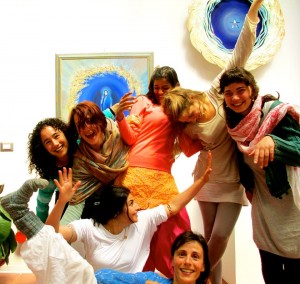
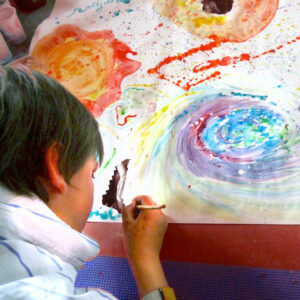

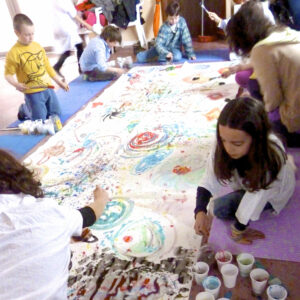

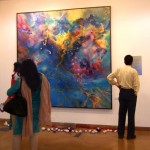


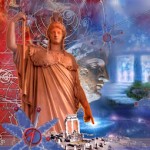


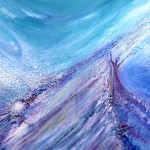
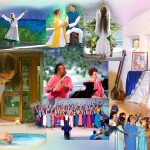



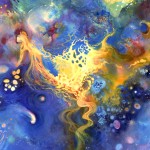



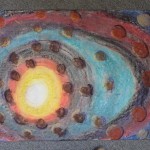




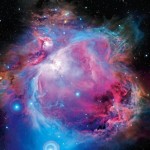







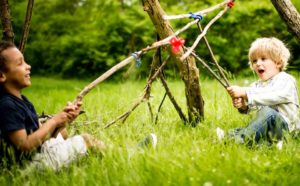
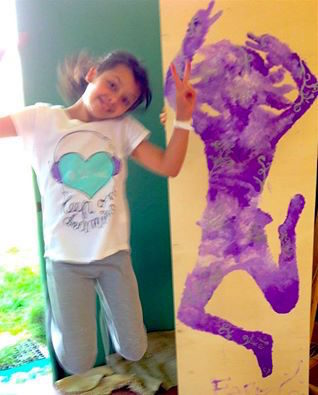

 We have not understood what creativity really is. Creativity is a mode of consciousness that takes us beyond ordinary mental states of restless thoughts and mental chatter. It is a state of awareness that is highly alert and perceptive, a way of thinking that is fluid and expansive. Creativity is a way of Being that allows us to open into a broader reality. When we are in the creative flow we are able to perceive a wider field of possibility.
We have not understood what creativity really is. Creativity is a mode of consciousness that takes us beyond ordinary mental states of restless thoughts and mental chatter. It is a state of awareness that is highly alert and perceptive, a way of thinking that is fluid and expansive. Creativity is a way of Being that allows us to open into a broader reality. When we are in the creative flow we are able to perceive a wider field of possibility.
 The current educational system was created for the purpose of industrialism, and forged in its image. The human being is not a machine and to feel like a cog in a wheel strips away what is most preciously human in us. The sparkle in the eyes that shines freely in all children is extinguished at increasingly younger ages.
The current educational system was created for the purpose of industrialism, and forged in its image. The human being is not a machine and to feel like a cog in a wheel strips away what is most preciously human in us. The sparkle in the eyes that shines freely in all children is extinguished at increasingly younger ages. 
 The light is inherent in every child, and it is so easily lost. The spark of passion, with its curiosity and drive; the illumination of wisdom with its discrimination and compassion; the effulgence of love and vitality- this living light of the soul is the sun around which all other qualities, capabilities and skills will orbit. When the living spark is well tended, the details of learning take care of themselves.
The light is inherent in every child, and it is so easily lost. The spark of passion, with its curiosity and drive; the illumination of wisdom with its discrimination and compassion; the effulgence of love and vitality- this living light of the soul is the sun around which all other qualities, capabilities and skills will orbit. When the living spark is well tended, the details of learning take care of themselves. 